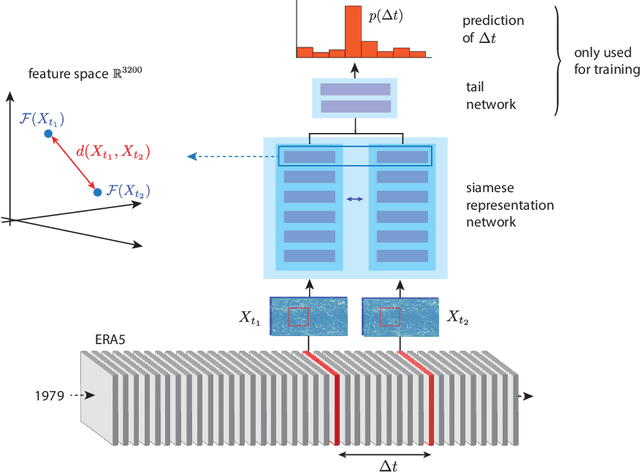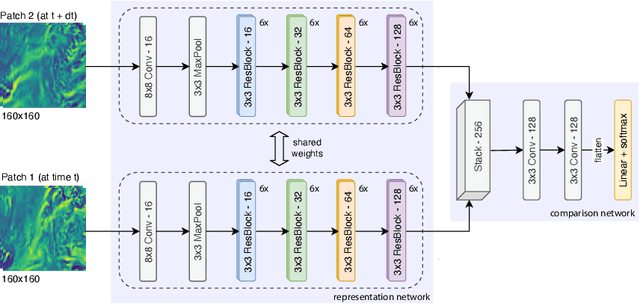AtmoDist: Self-supervised Representation Learning for Atmospheric Dynamics
Paper and Code
Feb 02, 2022



Representation learning has proven to be a powerful methodology in a wide variety of machine learning applications. For atmospheric dynamics, however, it has so far not been considered, arguably due to the lack of large-scale, labeled datasets that could be used for training. In this work, we show that the difficulty is benign and introduce a self-supervised learning task that defines a categorical loss for a wide variety of unlabeled atmospheric datasets. Specifically, we train a neural network on the simple yet intricate task of predicting the temporal distance between atmospheric fields, e.g. the components of the wind field, from distinct but nearby times. Despite this simplicity, a neural network will provide good predictions only when it develops an internal representation that captures intrinsic aspects of atmospheric dynamics. We demonstrate this by introducing a data-driven distance metric for atmospheric states based on representations learned from ERA5 reanalysis. When employ as a loss function for downscaling, this Atmodist distance leads to downscaled fields that match the true statistics more closely than the previous state-of-the-art based on an l2-loss and whose local behavior is more realistic. Since it is derived from observational data, AtmoDist also provides a novel perspective on atmospheric predictability.
 Add to Chrome
Add to Chrome Add to Firefox
Add to Firefox Add to Edge
Add to Edge